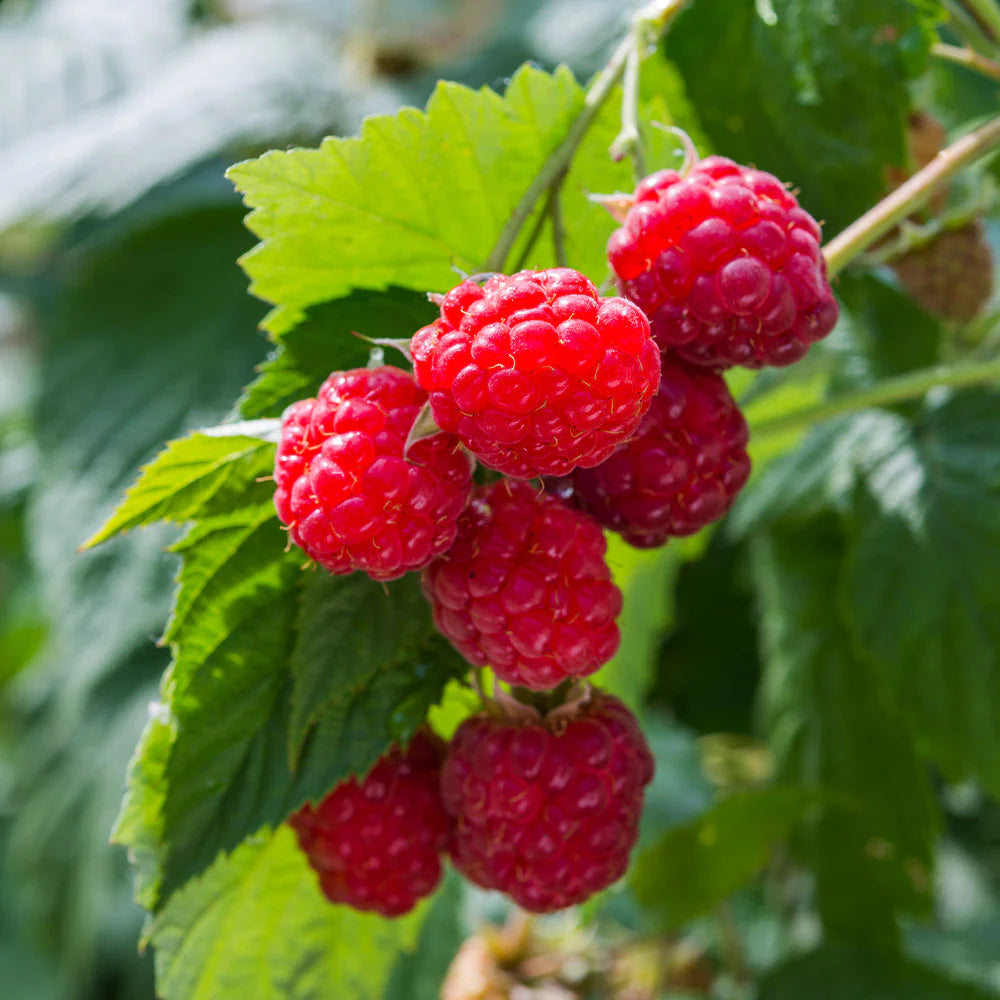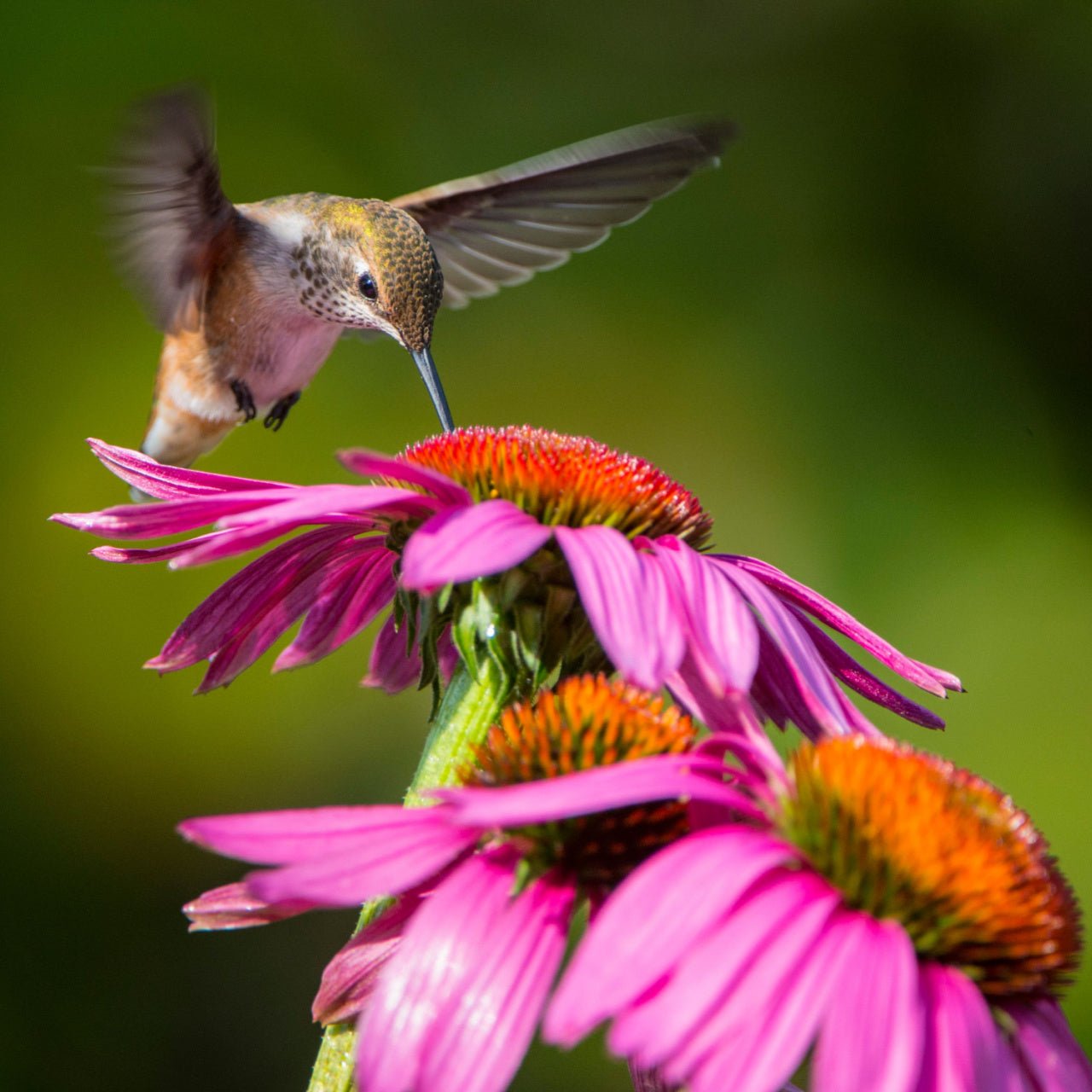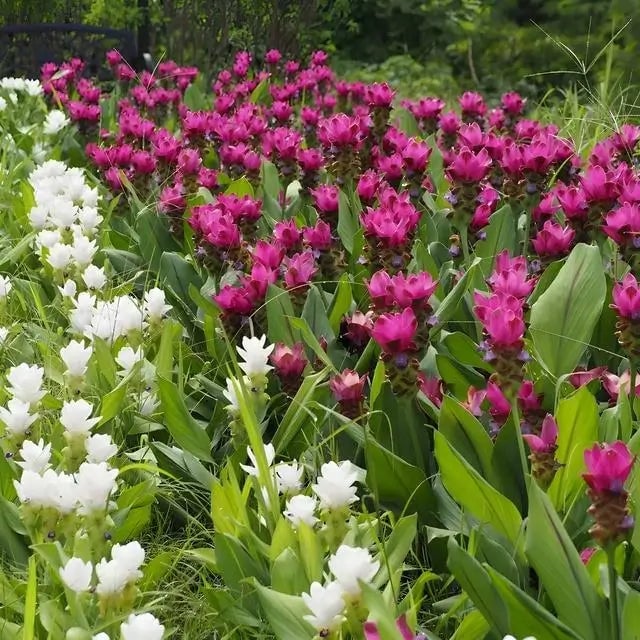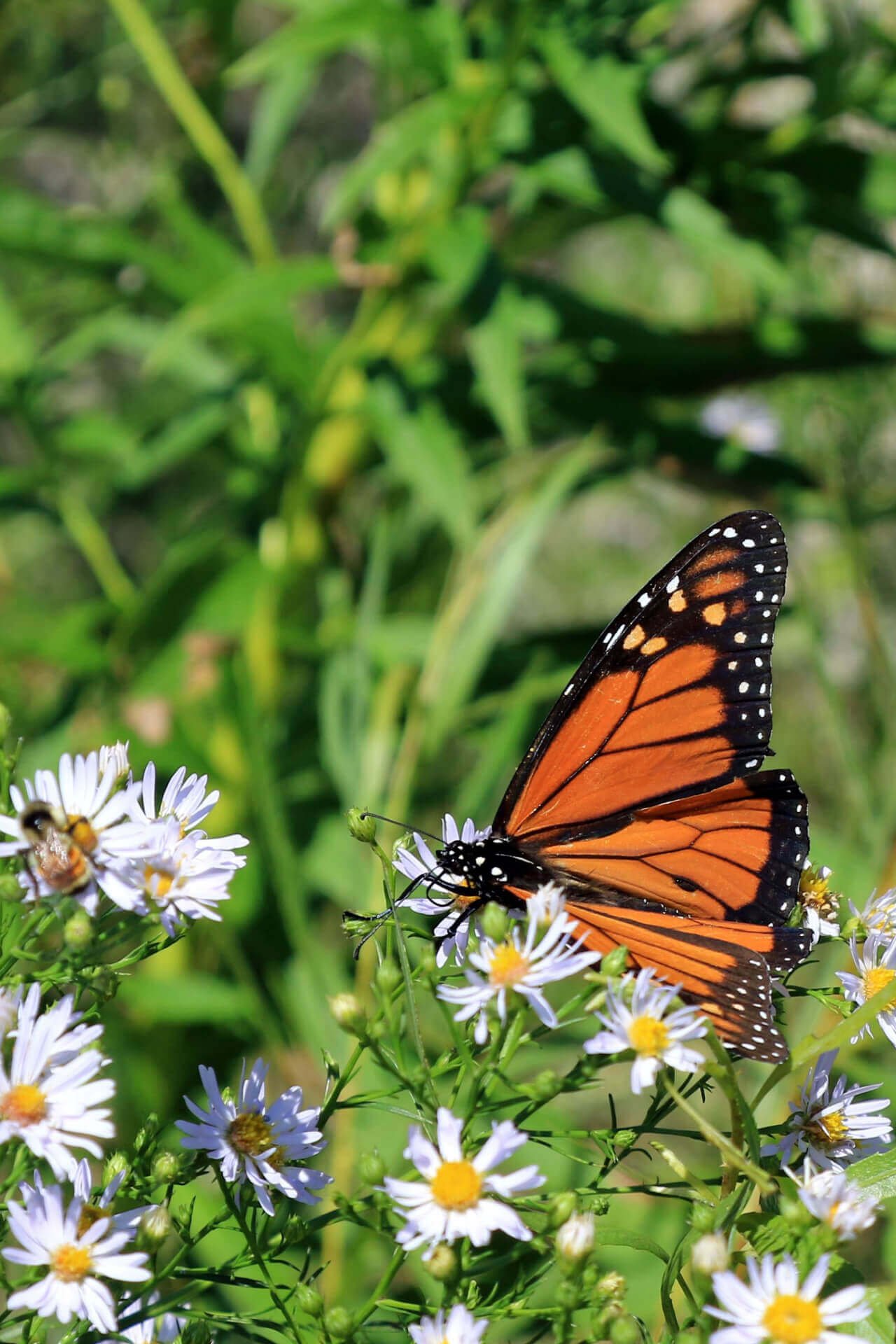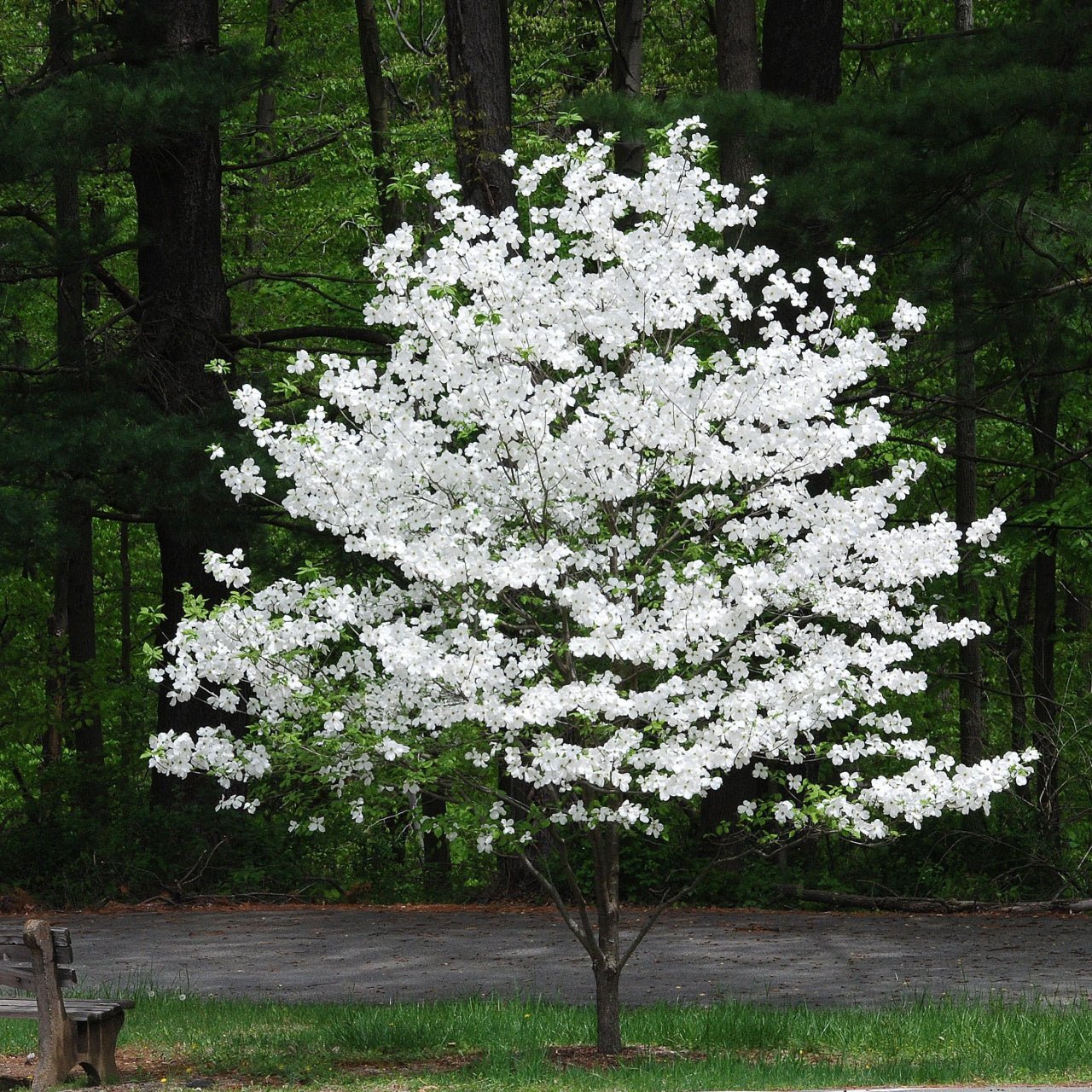
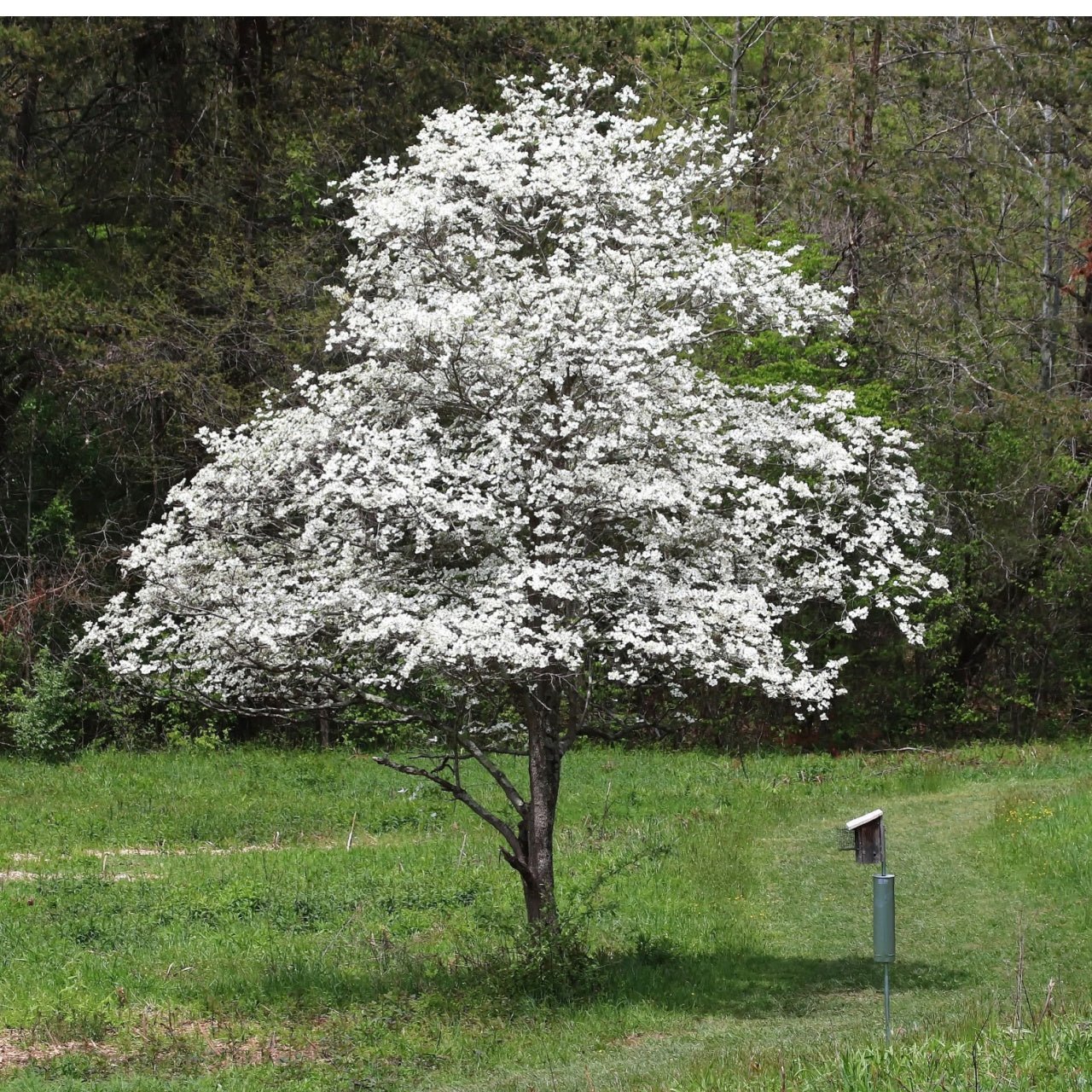

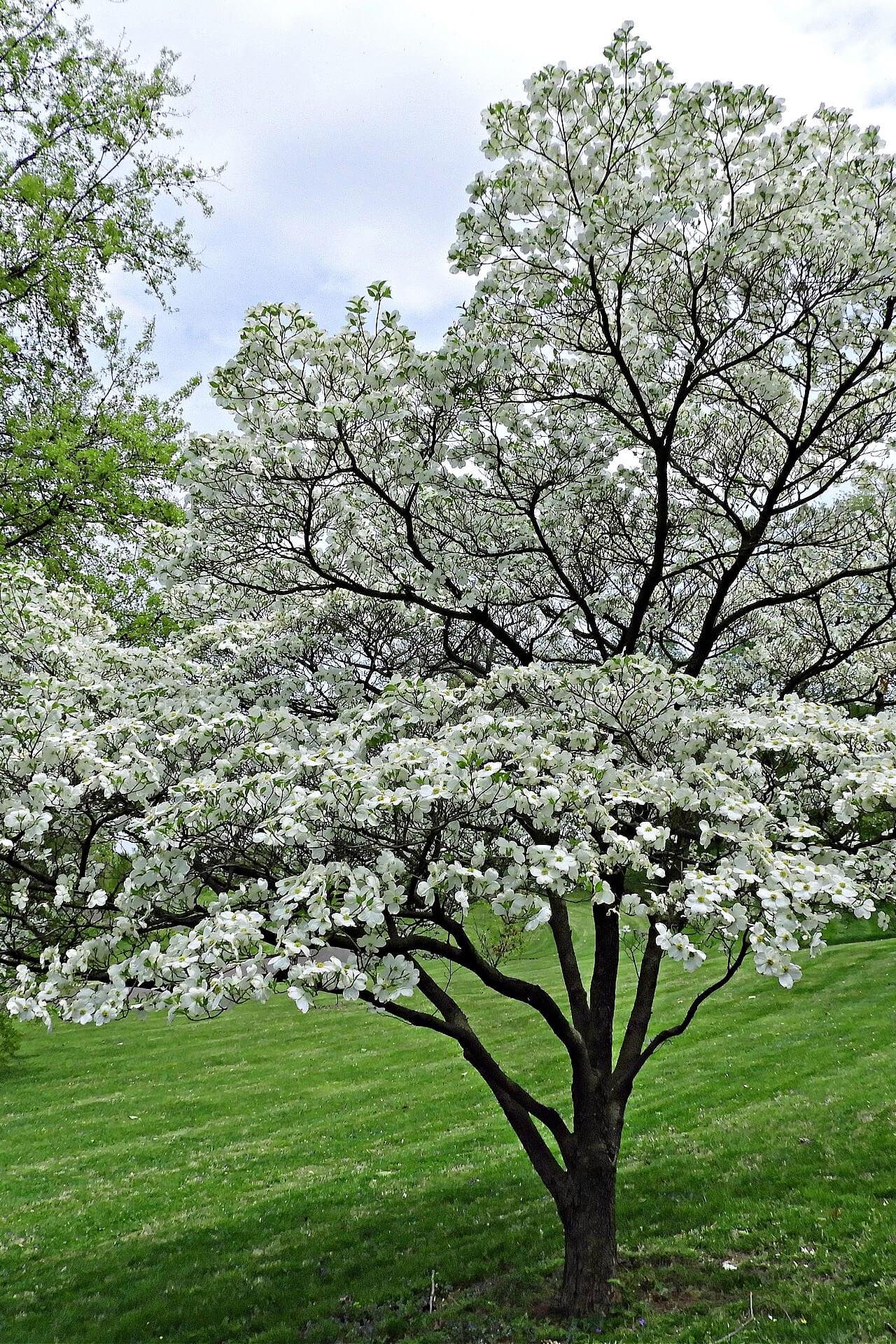


White Dogwood Tree
Thrives in Zones 5 - 9
Stunning springtime flower display
Provides year-round visual interest
Adaptable to various soil types
Ships in
November 2025White Dogwood Tree - Cornus florida
The White Dogwood Tree is an ornamental tree that has white flowers (bracts) that turn into small red berries in the fall. A superb landscape tree that will complement your shrubbery and flowers.
Plant Details - White Dogwood Tree
Family: Cornaceae
Light Requirement: Full Sun
Water Needs: Moist
Height: 15 – 30 ft.
Spread: 15 – 25 ft.
Growth Rate: Fast
Bloom Time: Spring
Flower Color: White
Wildlife Value: Attracts bees, butterflies
Landscape Uses and Maintenance – White Dogwood Tree
The White Dogwood Tree is a native deciduous flowering tree you must include in your landscaping for your home or company. Excellent when planted in your border, shade garden, or as an accent for your yard. Add native flowers underneath for a pleasant spring display, including Dutchman’s Breeches and Bloodroot.
Beautiful white flowers bloom in spring, creating showy and gorgeous clouds of creamy white in your landscape. They are replaced by small red berries in the fall.
As these trees are most often understory trees in their natural environment, they perform best in locations that will offer them partial shade with dappled sunlight. However, this tree can tolerate full sun. It will just need more water since it will dry out faster. Keep this in mind when planting.
Make sure to add a layer of leaf mold, humus, or mulch around the base of your tree. Do not volcano mulch: stay away from the trunk of the tree and keep the mulch low to ground.
Water your tree thoroughly until it is well established in its new location.
Their flowers are attractive to many different types of bees. Good news for birders – the berries are eaten by many local birds, including Cedar Waxwings, Northern Flickers, and Robins. They are also eaten by squirrels and other small mammals.
Noteworthy Characteristics
The White Dogwood Tree attracts many butterflies with its nectar filled flowers. It is most notably the host plant for the Spring Azure butterfly and the nocturnal Cecropia Silk moth.
The flowers are not actually flowers; the “petals” are a type of modified leaf called bracts. The true flowers are very small and are in the center.
This Is How Your Plants Will Look upon Delivery

Bloom Season
Spring
Bloom/Foliage Color
White
Height at Maturity
Under 25 Feet
Care
White Dogwood Trees thrive in well-drained soil and benefit from regular watering, especially during dry periods. Trim after blooming to keep shape and clear dead wood. Apply mulch to conserve moisture and protect roots. Fertilize annually with a balanced formula.
Plant Reproduction
The White Dogwood Tree spreads via seeds, root sprouts, and layering.
How to Grow and Care for Bare Root Trees
Bare root trees are shipped dormant without soil, making them lightweight, cost-effective, and easy to plant during the cool months of early spring or fall. To begin, soak the roots in a bucket of water for 4–6 hours before planting to rehydrate them. Choose a sunny location with well-draining soil and ample space for the tree’s mature size.
Dig a hole twice as wide as the spread of the roots and deep enough to keep the root flare (where the roots begin to spread from the trunk) at or slightly above ground level. Create a small mound of soil in the center of the hole, spread the roots evenly over it, backfill with native soil, and gently tamp down to remove air pockets. Water thoroughly after planting.
Keep the soil consistently moist (not soggy) during the first growing season, and apply mulch around the base—avoiding direct contact with the trunk—to conserve moisture and suppress weeds. Stake the tree if necessary, and prune only to remove dead or damaged branches. With proper care, your bare root tree will establish quickly and grow strong for years to come.
Shipping date depends on the date displayed and chosen when you order from the product's page.
We do not accept returned plants. If you purchased an extended warranty we do accept claims, please navigate to the warranty page for instructions HERE








Striking Spring Blooms:
The White Dogwood Tree showcases large, pure white flowers that bring elegance to any garden in early spring.
Fall Foliage:
Transforms with vibrant red and purple leaves in the fall, offering seasonal color and visual interest.
Compact Size:
Perfect for smaller yards or as an accent tree, it fits well in various landscape designs.
Low Maintenance:
Easy to grow and adaptable to different soil types, requiring minimal care to maintain its beauty.
Header
Use this content to share information about your store and products.
Frequently asked questions
Still have a question? Contact us here.
Yes, we ship all over the world. Shipping costs will apply, and will be added at checkout. We run discounts and promotions all year, so stay tuned for exclusive deals.
It depends on where you are. Orders processed here will take 5-7 business days to arrive. Overseas deliveries can take anywhere from 7-16 days. Delivery details will be provided in your confirmation email.
You can contact us through our contact page! We will be happy to assist you.








